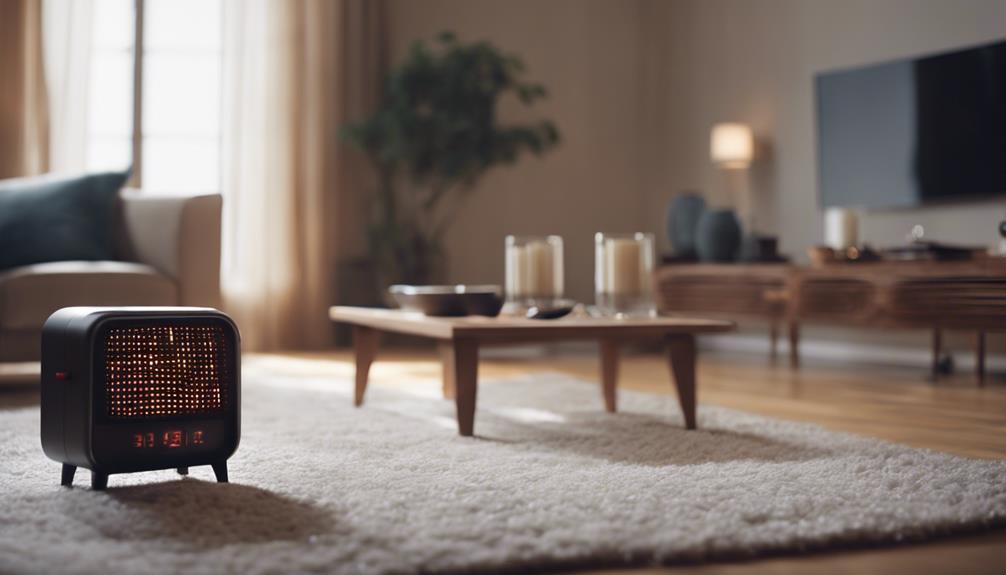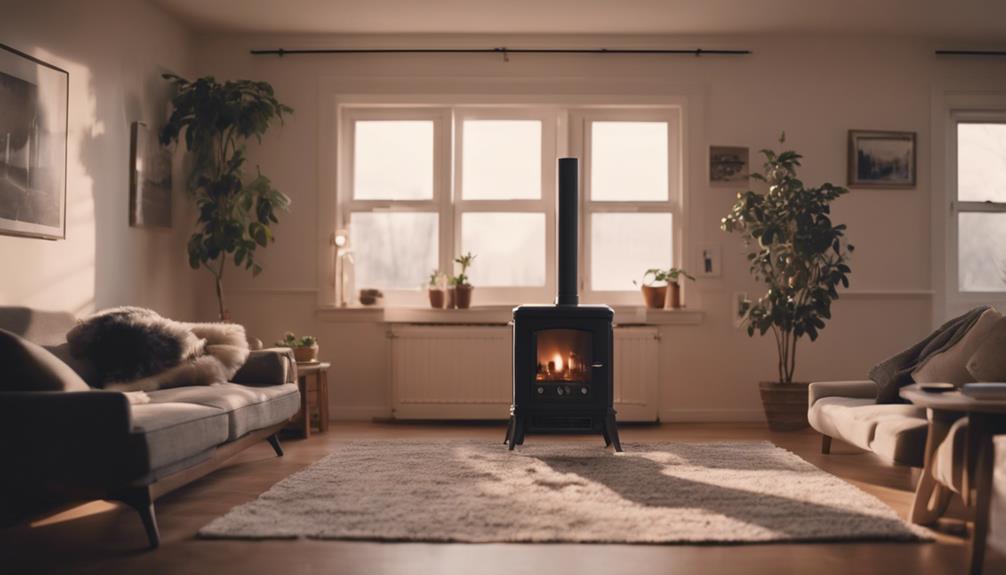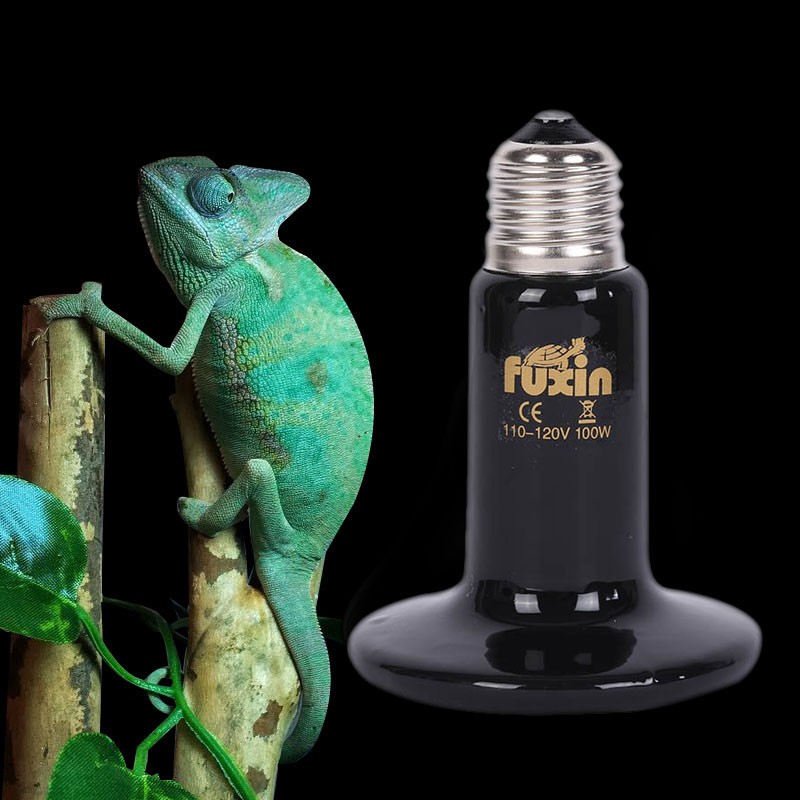
Traditional heaters, while effective in specific room layouts, have limitations in adaptability to varying spaces. They might struggle to evenly distribute heat in rooms with complex layouts or open-concept designs. In contrast, infrared heaters offer focused heating for quicker warmth and energy savings, suitable for various room configurations. Their space-saving designs, wall-mounting versatility, and portable options enhance flexibility in heating solutions. Smart control features and safety measures guarantee efficient and safe operation. Understanding these nuances can help optimize heating efficiency based on your room layout requirements.
Infrared Heater Basics

To understand the fundamental principles of infrared heaters, it's essential to grasp how these devices emit electromagnetic radiation to heat objects directly in their path. Infrared heaters come in various types, including ceramic, quartz, and halogen. Each type operates by producing infrared radiation that warms objects and individuals without heating the surrounding air. This targeted heating approach offers several benefits compared to traditional convection heaters.
One of the significant advantages of infrared heating is its efficiency in directly heating objects, which results in quicker warmth without the need to heat the entire room. This focused heating can lead to energy savings since less heat is wasted on heating unused areas.
Infrared heaters also provide more consistent and comfortable warmth as they don't create drafts or circulate dust particles in the air. Additionally, these heaters are known for their silent operation, making them ideal for spaces where noise may be a concern.
Compact Design Solutions
Compact design solutions for infrared heaters incorporate innovative engineering techniques to maximize heating efficiency in limited spaces.
Manufacturers have developed space-saving designs that cater to rooms where traditional heaters may not fit. These compact heaters are designed to be mounted on ceilings, walls, or even placed discreetly in corners, ensuring they don't encroach on valuable floor space. The aesthetic integration of these heaters is also a key focus, with sleek and modern designs that blend seamlessly with various room layouts.
One popular design choice is the slim panel heater, which provides a low-profile heating solution ideal for rooms with limited wall space. These panels can be mounted vertically or horizontally, offering flexibility in installation to suit different room configurations.
Another innovative design is the compact infrared heater that can be recessed into the ceiling, providing efficient heating without compromising the room's aesthetics.
Wall-Mounted Versatility

Enhancing the flexibility of room layouts, wall-mounted infrared heaters offer versatile heating solutions with efficient space utilization.
When considering wall-mounted versatility, it's essential to assess the ideal mounting heights for your infrared heater. The ideal mounting height typically ranges between 6 to 8 feet above the floor to guarantee even heat distribution throughout the room. This placement helps avoid any potential hot spots or uneven heating.
Moreover, the type of wall materials can impact the effectiveness of wall-mounted heaters. For example, concrete or brick walls may absorb and retain heat differently compared to drywall or wood paneling.
Understanding how different wall materials interact with the heat emitted by the infrared heater can help enhance its performance.
Portable and Adjustable Options
Consider investing in portable infrared heaters for convenient heating options that offer flexibility and ease of adjustment in various room layouts.
Portable heaters provide a mobile heating solution that can be easily moved around to suit your changing needs. With adjustable settings, these heaters allow you to customize the temperature and airflow direction to achieve ideal comfort in any room configuration.
Portable infrared heaters typically come equipped with adjustable thermostats that enable you to set the desired temperature level. Some models also feature oscillation functions that help distribute heat evenly across the room.
The portability of these heaters makes them ideal for spaces where a fixed heating system may not be practical or cost-effective. Additionally, their compact size and lightweight design make them easy to store when not in use.
When selecting a portable infrared heater, consider factors such as heating capacity, energy efficiency, and safety features. Look for models with adjustable heat settings, timers, and remote controls for added convenience.
Smart Control Features

Utilize smart control features on portable infrared heaters for efficient and convenient temperature regulation in various room layouts.
Smart thermostats integrated into these heaters allow you to precisely set and maintain your desired temperature levels. With remote access capabilities, you can adjust the heater settings from anywhere using your smartphone or other devices connected to the internet. This feature is particularly beneficial for individuals with dynamic schedules or those who want to guarantee their room is warm and comfortable upon arrival.
Smart thermostats enable personalized heating schedules, adapting to your routine and optimizing energy consumption. They can also provide insights into your heating patterns, helping you make informed decisions to enhance efficiency.
The ability to control the heater remotely adds convenience and flexibility, allowing you to monitor and adjust the temperature even when you're away from home. By leveraging these smart control features, you can create a tailored heating experience that suits your preferences while maximizing energy efficiency.
Safety Measures to Consider
Implementing proper safety measures when using portable infrared heaters is vital to prevent potential hazards and guarantee a secure heating environment in your space.
To maintain safety, always plug your infrared heater directly into a wall outlet, avoiding extension cords or power strips that could overheat. Regularly inspect the power cord for any signs of fraying or damage, which could pose electrical risks.
Additionally, keep your heater at least three feet away from any combustible materials such as curtains, furniture, or bedding to reduce fire hazards. It's important to place the heater on a flat, stable surface to prevent accidental tipping, which could lead to burns or fires.
When not in use, always turn off and unplug the heater to prevent any electrical malfunctions.
Energy-Efficient Heating Choices

To enhance energy efficiency in your heating choices, prioritize selecting heaters with programmable thermostats and timer settings.
Programmable thermostats allow you to set specific temperatures for different times of the day, guaranteeing your heater operates only when necessary. This helps reduce energy consumption by preventing overheating or running the heater when you aren't at home. Timer settings further improve efficiency by allowing you to schedule when the heater turns on and off, aligning with your daily routine.
By utilizing these features effectively, you can considerably lower your heating costs while maintaining a comfortable indoor environment.
When comparing energy-efficient heating choices, consider factors such as the heater's heating capacity, energy source, and overall performance.
Electric heaters are generally more energy-efficient than traditional gas heaters, but their effectiveness may vary depending on the size and insulation of the room. Investing in heaters with Energy Star certification can also guarantee peak efficiency while minimizing energy consumption.
Additionally, regular maintenance and proper usage play essential roles in maximizing the energy efficiency of your heating system.
Conclusion
To summarize, traditional heaters may not be suitable for all room layouts due to their limited flexibility and space requirements.
However, infrared heaters offer a range of compact, versatile, and energy-efficient options to better meet the heating needs of different spaces.
By considering factors such as design, portability, control features, and safety measures, you can find the right heating solution for any room layout.

